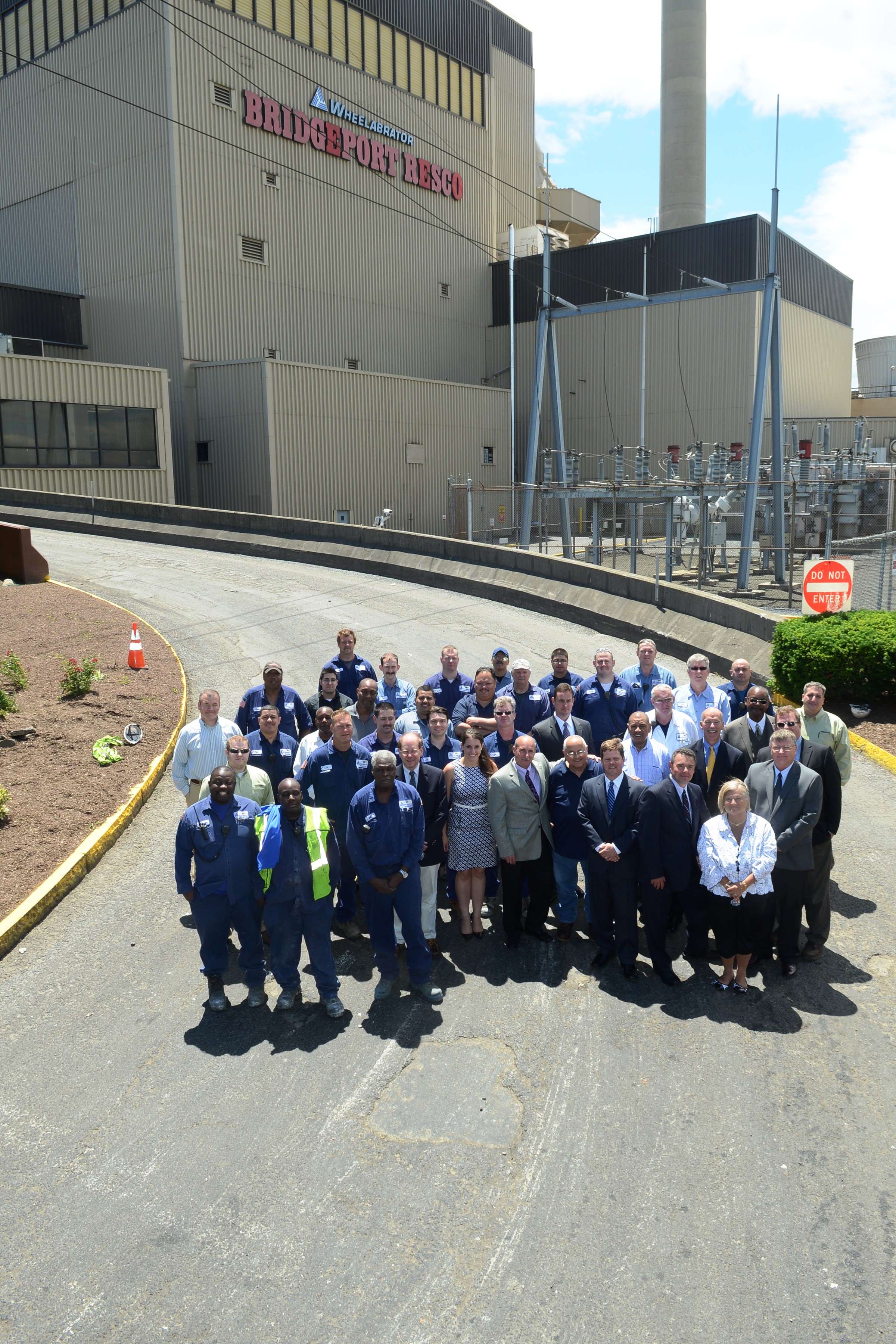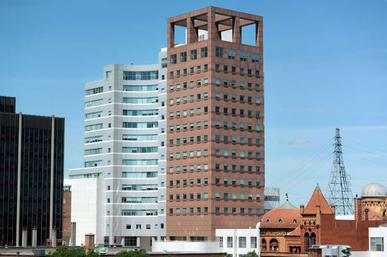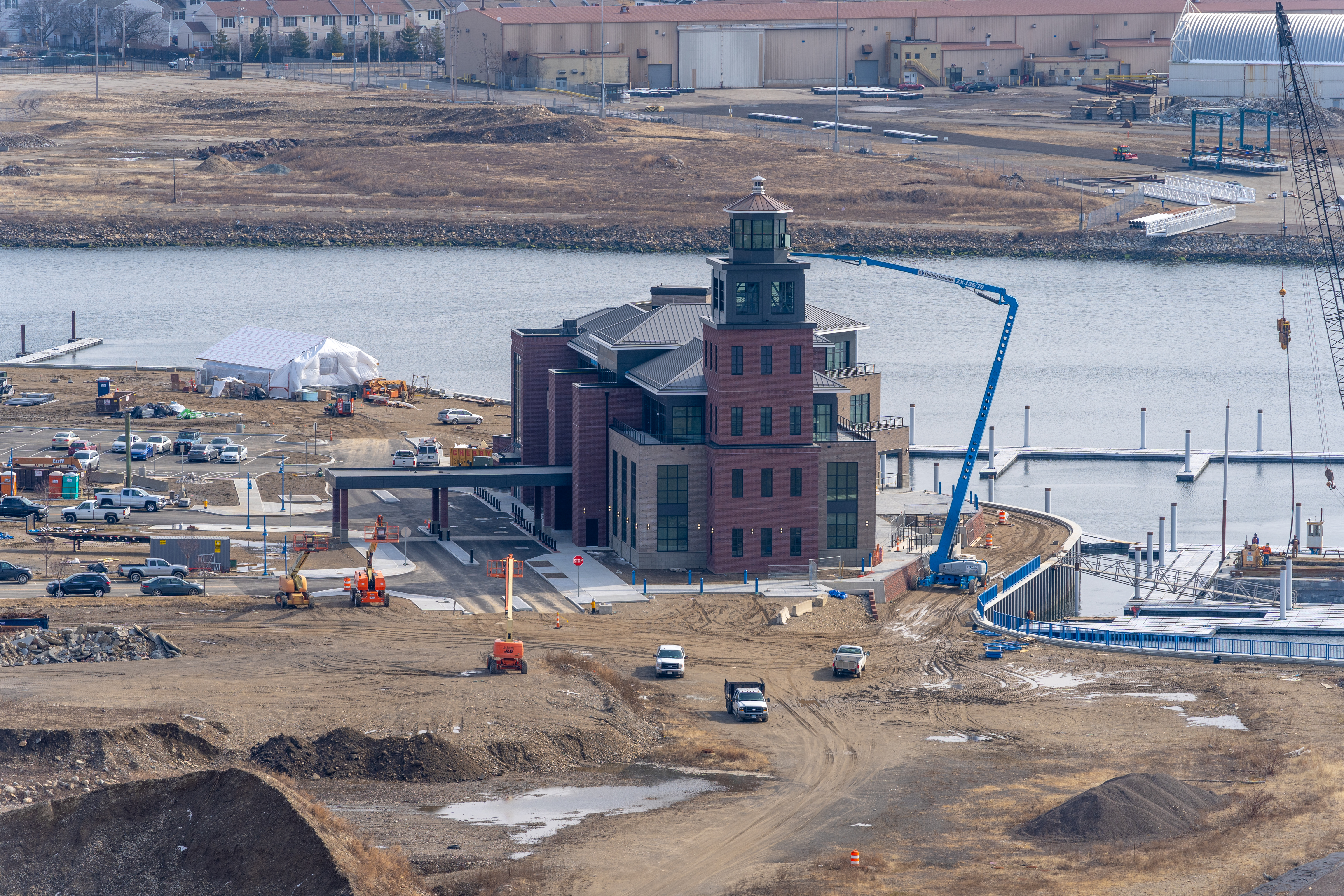
Led by PSEG’s $500 million Bridgeport Harbor Station, Mayor Joe Ganim announced on Monday a five percent increase in the city’s grand list of taxable property that provides leverage to hold the line on taxes and a possible cut in an election year as city bean counters prepare a budget for April submission to the City Council.

The city’s grand list has been stagnant for years–most municipal finance officials covet a 1-2 percent growth annually–so the coal-to-natural-gas conversation represents a major turbocharge to city finances.

Overall, the total assessed taxable grand list in Bridgeport stands at $6,353,391,813; according to city officials. The city issued these summary components:
All Taxable: 2018 Grand List
Real Property $4,772,680,627
Personal Property $1,071,557,764
Motor Vehicles $509,153,764
TOTAL GRAND LIST: $6,353,391,813
Change as % 2018 v 2017: +5.2%
“This Grand List increase brings a strong foundation as we prepare to go into the city’s budget process,” said Ganim in a prepared statement. “We will continue to be prudent with taxpayer dollars as we work through the challenges of balancing operational finances as well as fulfilling pension obligations and dealing with past decreases in state funding.”
Wheelabrator, operator of the regional trash-to-energy plant, remains the city’s top commercial taxpayer, followed by PSEG and People’s United Bank headquartered in the city.

Bridgeport Landing Development that owns the Steelpointe Harbor redevelopment area has cracked the list of top 10 city taxpayers, according to records provided by the city: 3 4 19 GRAND LIST DATA ATTACHMENT


The new Warren Harding High School added over $100,000,000 to the Grand List and doesn’t add one dollar of tax revenue.
Every additional dollar in tax revenue should be shifted to the Bridgeport Public Schools. Yes, every dollar.
“The city’s grand list has been stagnant for years – most municipal finance officials covet a 1-2 percent growth annually..”
As MP states above Grand List values do not seem to vary much from year to year. But in a City with big needs for Education dollars to OPERATE the school system instead we have seen the conversion of State of CT investment in our City through rebuilding the schools during the past decade. On average the City has spent about 20% of the cost of the school buildings while the State has spent the other 80%. When the building gets its Certificate of Occupancy (or thereabout) the building gets included at 100% of its then value on our Grand List with only 20% or less of the project debt. It does look positive as an accounting entry.
However, school buildings are not tax paying properties and these values, like other City buildings, hospitals, churches, parks, etc. are not part of the Net Taxable Grand list. Major changes seem to occur at 10 year revaluation points. In the last one, Wheelabrator taxability, in play for at least the previous ten years were settled with decrease in valuation and credit for taxes already satisfied along with an estimate of fair market values. All of this represented a “noisy belch” with a reduction of over $1 Billion of value, more than 15%, at which Ganim2 took advantage of packing his reformed personnel budget, changing information flow to the Council and taxpayers, and keeping the general public safety expense excesses from public view or discussion. Blame Finch for $20 Million!!! Do nothing to discover how the Finch administration was guilty of the charge!!! And, repeat ad nauseam!!! That is what the chance for a re-do gave the citizens of Bridgeport so far. Time will tell.
I went to 45 Lyon Terrace to pick up a copy of the 2018 and 2019 Grand List.
I then visited several additional departments. Every single city employee I dealt with today was attentive, professional and courteous. I ran into a woman named Ms. Morales in Building Permits. She was so incredibly helpful.
At one point she asked if I was Maria Pereira. I responded yes. She was very complimentary about my recent op-ed on the cancellation of the Community Conversations. We then had a fascinating conversation about the romantic/political machinations going on in Bridgeport. Hmmm…
If Ganim doesn’t deliver a 10% reduction in taxes he should be voted out off office. 5% is right here with the Grand List (isn’t that grand) and at least another 5% minimum is all the over taxation we have had to put up with over the last three years.
You’ll have a lot of personal time if you tell that to Ganim. You be fired.
And if he does come up with a 10% reduction in taxes there had better be a lot of questions asked.
A municipality’s grand list is the aggregate value of TAXABLE property… This, of course, implies that non-taxable property belonging to non-taxable institutions, such as houses of worship, state, federal, and municipal property, and (most — essentially all) property belonging to educational institutions and non-profit organizations, is not counted in a municipality’s grand list. Bridgeport hosts much of the region’s real, NON-TAXABLE property, such as two, large hospitals, much federal and state property, including two, large jails, two large courthouses, many private, non-profit-agency properties serving the region’s social needs, etc…. And these properties, most of which serve the region, cost the city tens of millions of tax dollars for services/infrastructure use and maintenance… Just a reminder about this fiscal saddle that keeps our municipal back rubbed raw/bleeding…
But of course, when thinking about the grand list of the state’s largest city and historical county seat, it is useful to compare its grand list with that of other Fairfield County cities — such as Stamford, which has a grand list of just about $20 billion… So, at $6.35 billion, we have a grand list that is only about 1/3 as much as the grand list of Stamford, which is 1/3 smaller in population than Bridgeport and hosts significantly less non-taxable property… (And, next-door Fairfield, with less than half our population, has a grand list of almost $11 Billon!…) What is wrong with this picture?!
Now, we are crowing about a 5% increase in our grand list via the construction of a new gas-fired, WATERFRONT, region-serving, essentially-jobless, power plant. We’re claiming a $500,000,000 increase in the grand list, but this doesn’t work out mathematically if we are going from our officially-reported (State of Connecticut records) 2017-2018 valuation of $6.1 billion to $6.35 billion, which shows an increase of only $250,000,000… The grand list is for ASSESSED value, not resale value… We should be clear about that… Our grand list, sticking to the accurate definition, is for only $250,000,000.
Now, let’s keep in mind that this new gas plant hasn’t yet “replaced” the old coal, huge, hulking coal plant, which represents about as much grand list value. So, when the coal plant is decommissioned and razed, we’ll see a consequent grand list drop… So this wonderful new grand list increase, if accompanied by a tax cut in 2019, will see a counterbalancing tax increase in about 2021 when the coal plant is (presumably) taken off of the grand list…
But, the real rub here is that WATERFRONT power plants represent large opportunity costs… Just think of what two or three, large resort hotels would be worth on prime, Long Island Sound coastline in Bridgeport, where now there are three, large, fossil-fuel power plants (supplying the huge, regional, non-Bridgeport, collective tax-base)… Norwalk thought about that and decommissioned and razed heir only power plant in 2014, anticipating a “much higher” use of the property…
This election-year grand list is nothing to crow about, if considered in context… The next mayor should be held to the platform requirement of having a plan that will grow Bridgeport’s grand list/tax-base by upwards of $14 Billion, so that we could a municipal viability/quality of life and mil rate that approximates our baby-sister city of Stamford, just down I-95… We shouldn’t vote for any mayoral candidate that doesn’t come up with a plausible plan for this type of 10-to-15-year-period tax-base growth (adjusted for probable inflation…).
Bridgeport can’t afford to think small or “wing-it” any longer. We need an aggressive plan/agenda for massive, rapid/steady tax-base growth — and not via more, region-serving, fossil-fuel power plants…